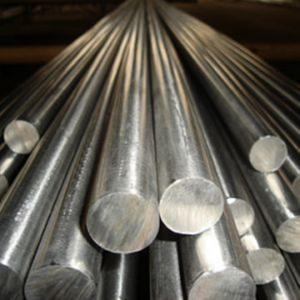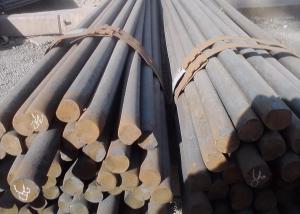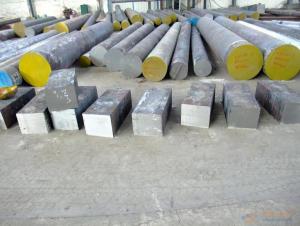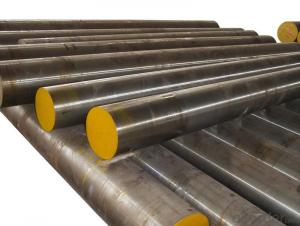SKD11 Hot Rolled 12mm Steel Rod 1.2379 Steel Round Bar
- Loading Port:
- China main port
- Payment Terms:
- TT or LC
- Min Order Qty:
- 25 m.t.
- Supply Capability:
- 10000 m.t./month
OKorder Service Pledge
OKorder Financial Service
You Might Also Like
Item specifice
1. Main application of skd11 steel:
(1) Thickness of not more than 2MM sheet, efficient blanking die, punch die and pressure die etc.
(2) All kinds of scissors, inserts, woodworking blade.
(3) Thread rolling die and wear-resistant slider.
(4) Cold Heading Die, thermosetting resin molding.
(5) Molding in deep drawing cold extrusion dies
2. Specification of skd11 steel:
Round bar | Diameter(mm) | Length (mm) | |
10~800 | 2000~5800 | ||
plate/sheet | Thickness(mm) | Width (mm) | Length (mm) |
10~800 | 80~2300 | 2000~5800
|
3. Delivery condition of skd11 steel:
Acc. to your request—Standard steel bar(sawing)
——non-standard steel bar(sawing)
or Mill deliver condition,without sawing or cutting
Conventional or ESR, hot rolled or forged, black surface or milling
Hardness: annealed to HB≤255
4. Features of skd11 steel:
(1) Good quenching resistance, heat deformation small, wear-resistant, impact resistant.
(2) Vacuum degassing refining processing pure steel.
(3) Spheroidizing softening process, good cutting performance.
(4) Strengthen the elements vanadium, molybdenum special join, is extremely excellent in wear resistance.
5. Chemical analysis of skd11 steel:
C | Si≤ | Mn≤ | P≤ | S≤ | Cr | Mo | V |
1.40~1.60 | 0.40 | 0.60 | 0.030 | 0.030 | 11.0~13.0 | 0.80~1.20 | 0.20~0.50 |
6. Compared grades of skd11 steel(based on usage)
Chinese | American | German | Swedish | Japanese |
GB | AISI | DIN | ASSAB | JIS |
Cr12Mo1V | SKD11 |
7. Heat treatment of skd11 steel (for reference)
quenching | quenching hardness | tempering | Tempering hardness |
1020~1040 °c | 58~60HRC | 150~200 °c | 62~63HRC |
Product show
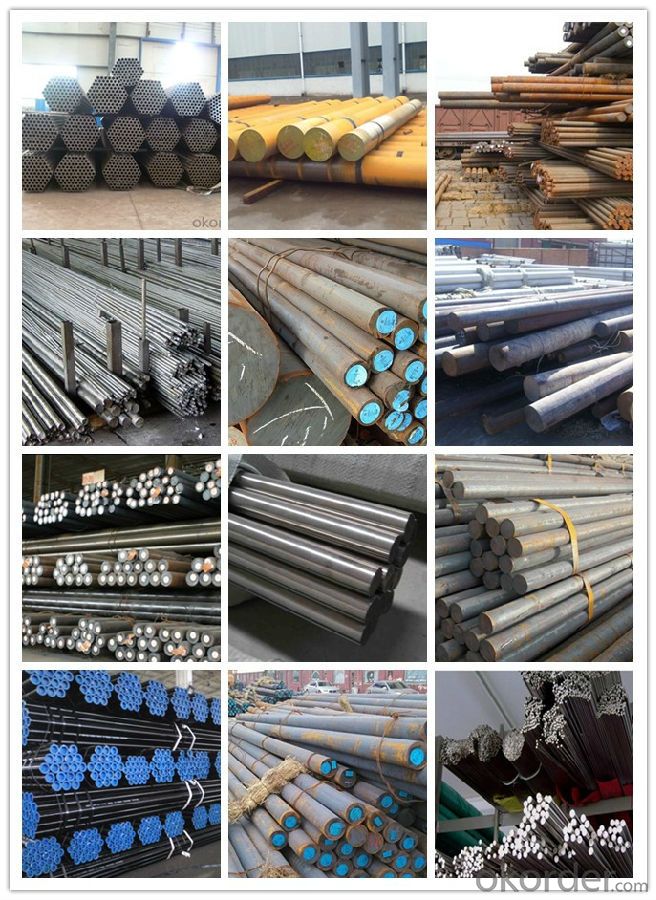
Workshop show
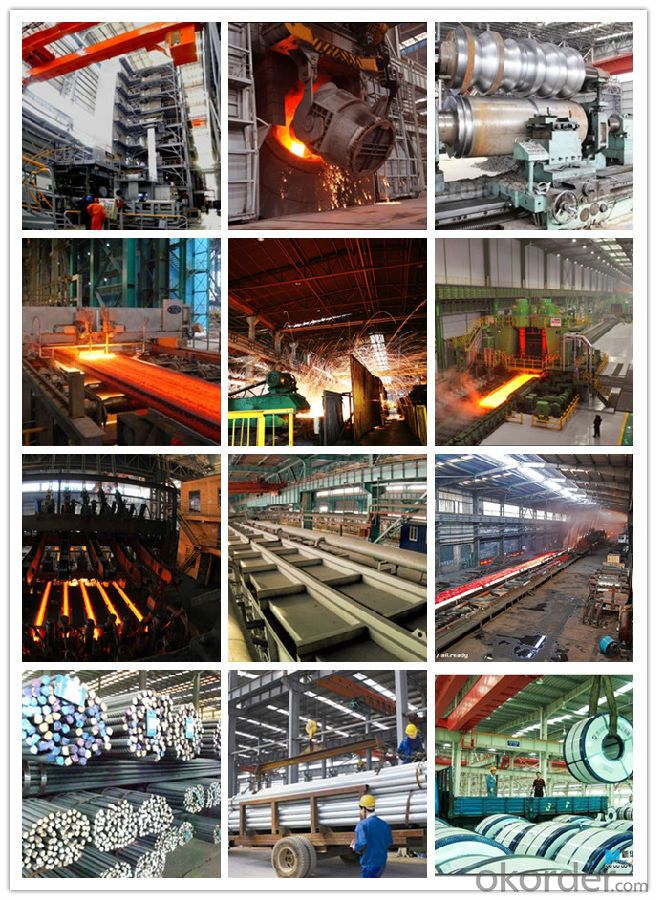
- Q:How does special steel contribute to the power transmission sector?
- Special steel plays a crucial role in the power transmission sector due to its exceptional properties and performance characteristics. Firstly, special steel is known for its high strength and resilience, which makes it an ideal material for manufacturing various components of power transmission systems. For instance, special steel is widely used in the production of transmission towers, where its strength ensures the stability and durability of the structures, even under extreme weather conditions. Moreover, special steel is highly resistant to corrosion, which is particularly beneficial in the power transmission sector. Power transmission equipment is often exposed to harsh environments, such as high humidity, chemical pollutants, and saltwater exposure, which can accelerate corrosion. By utilizing special steel in the manufacturing process, the risk of corrosion-related failures is significantly minimized, ensuring the reliable and uninterrupted transmission of power. Additionally, special steel offers excellent electrical conductivity, making it an ideal choice for conductors and cables used in power transmission. The efficient transfer of electrical energy is crucial to minimize power losses and optimize the transmission process. Special steel conductors provide low resistance to the flow of electricity, enabling efficient power transmission over long distances. Furthermore, special steel is also utilized in the production of transformers and other electrical equipment used in power transmission. The magnetic properties of special steel make it an excellent material for transformer cores, enabling efficient energy conversion and minimizing energy losses during transmission. In conclusion, special steel contributes significantly to the power transmission sector by offering strength, corrosion resistance, electrical conductivity, and magnetic properties. These properties ensure the reliability, efficiency, and longevity of power transmission systems, ultimately supporting the uninterrupted supply of electricity to industries, businesses, and households.
- Q:How is special steel used in the aerospace industry?
- Special steel is used in the aerospace industry for various applications due to its exceptional strength, durability, and resistance to extreme temperatures. It is commonly utilized in the manufacturing of aircraft structures, engine components, landing gear, and fasteners. The high strength-to-weight ratio of special steel enables the construction of lightweight yet robust parts, contributing to improved fuel efficiency and aircraft performance. Additionally, its ability to withstand harsh environmental conditions and maintain structural integrity makes it indispensable for ensuring the safety and reliability of aerospace systems.
- Q:What are the specific requirements for special steel used in the automotive piston industry?
- The specific requirements for special steel used in the automotive piston industry are designed to ensure high performance, durability, and efficiency of the pistons. These requirements include: 1. High strength: Special steel used in automotive pistons must possess high tensile strength and hardness to withstand the extreme pressures and temperatures generated during combustion. 2. Heat resistance: The steel must have excellent heat resistance properties to withstand the intense heat generated by the combustion process without deforming or losing strength. 3. Wear resistance: Pistons undergo constant friction and wear against the cylinder walls. Therefore, the special steel used must have good wear resistance to minimize the wear and tear and prolong the lifespan of the piston. 4. Low thermal expansion: The steel should have a low coefficient of thermal expansion to prevent excessive expansion and contraction during temperature variations, ensuring a tight seal between the piston and cylinder walls. 5. Corrosion resistance: Pistons are exposed to various corrosive elements, including combustion by-products and engine oil. Special steel used in piston manufacturing must have good corrosion resistance to prevent premature deterioration and failure. 6. Fatigue resistance: The steel should possess excellent fatigue resistance to withstand the repetitive stress cycles experienced by the piston during engine operation. 7. Machinability: Special steel used in pistons should be easily machinable to achieve precise dimensions and tolerances necessary for optimal performance. 8. Cost-effectiveness: While meeting the above requirements, special steel used in the automotive piston industry should also be cost-effective to ensure profitability for the manufacturers. By meeting these specific requirements, special steel used in the automotive piston industry contributes to the overall performance, reliability, and longevity of the piston, which in turn enhances the efficiency and durability of the entire engine system.
- Q:What are the different methods for annealing special steel?
- There are several methods for annealing special steel, each designed to achieve specific results and properties. Some of the most commonly used methods include: 1. Full annealing: This method involves heating the steel to a temperature above its critical temperature and holding it there for a specific duration of time. It is then slowly cooled to room temperature. Full annealing helps to achieve maximum softness and improve ductility, making the steel easier to machine and work with. 2. Isothermal annealing: In this method, the steel is heated to a temperature above its critical temperature and then immediately transferred to a furnace or chamber where it is held at a constant temperature. This allows for controlled cooling, resulting in a homogeneous and fine-grained microstructure. Isothermal annealing is particularly useful for reducing distortion and improving dimensional stability in complex-shaped parts. 3. Spheroidize annealing: This method is commonly used for high-carbon steels. It involves heating the steel to a temperature just below its critical temperature and holding it there for an extended period. This promotes the formation of spheroidized carbides, which improves machinability and reduces brittleness. 4. Process annealing: This method is typically employed to relieve internal stresses and reduce hardness in cold-worked steel. The steel is heated to a temperature below its critical temperature and then cooled in still air. Process annealing helps to restore ductility and improve formability. 5. Stress-relief annealing: This method is used to alleviate residual stresses in the steel, often caused by welding or machining processes. The steel is heated to a temperature below its critical temperature and then slowly cooled. Stress-relief annealing helps to minimize distortion and prevent cracking. It is important to note that the specific annealing method used for special steel will depend on factors such as the composition of the steel, desired mechanical properties, and the intended application of the material.
- Q:How does special steel contribute to the pharmaceutical industry?
- Special steel contributes to the pharmaceutical industry by providing the necessary materials for the production of high-quality equipment and tools. It is used in the manufacturing of pharmaceutical machinery, such as reactors, mixers, and pumps, that require corrosion resistance and hygienic properties. Special steel also plays a crucial role in the construction of storage and transportation containers for pharmaceutical products, ensuring their safety and efficacy.
- Q:What are the different powder coating techniques used for special steel?
- There are several powder coating techniques used for special steel, including electrostatic spraying, fluidized bed coating, and electrostatic fluidized bed coating. These techniques involve applying a dry powder coating to the steel surface, which is then cured to form a durable and protective layer. Each technique has its own advantages and is used based on the specific requirements of the steel and the desired finish.
- Q:How does special steel perform in high-temperature creep?
- Special steel has been specifically engineered to excel in conditions of high-temperature creep. Creep refers to the material's inclination to deform over time under consistent stress at elevated temperatures. Due to its unique composition and heat treatment procedures, special steel demonstrates exceptional resistance to creep. The alloying elements, including chromium, nickel, and molybdenum, significantly enhance its strength at high temperatures and its ability to resist creep. These elements create stable carbides and enhance the material's capacity to maintain its structural integrity even when exposed to elevated temperatures. Additionally, special steel often undergoes specific heat treatment methods, such as annealing or quenching and tempering, to further improve its resistance to creep. These processes refine the steel's microstructure, reduce internal stresses, and enhance its overall mechanical properties. The combination of alloying elements and heat treatment processes endows special steel with exceptional resistance to creep. It can endure prolonged exposure to high temperatures without significant deformation or failure. This makes special steel an ideal choice for applications involving high-temperature and high-stress conditions, such as gas turbines, petrochemical plants, and power generation facilities. In conclusion, the performance of special steel in situations of high-temperature creep is exceptional, and it is widely acknowledged as a dependable and durable material for applications requiring resistance to thermal deformation and long-term stability under constant stress.
- Q:How is special steel used in the telecommunications industry?
- Special steel is used in the telecommunications industry for various applications, such as the construction of transmission towers, antenna supports, and satellite equipment. Its high strength, corrosion resistance, and durability make it ideal for withstanding harsh environmental conditions and ensuring the stability and reliability of telecommunications infrastructure.
- Q:Can special steel be used in tool manufacturing?
- Yes, special steel can be used in tool manufacturing. Special steel is often preferred for tool manufacturing due to its exceptional hardness, toughness, and resistance to wear and corrosion. These properties make it highly suitable for producing durable and efficient tools that can withstand demanding applications.
- Q:How does special steel play a role in the defense sector?
- Special steel plays a crucial role in the defense sector due to its exceptional strength, durability, and resistance to heat, corrosion, and impact. It is used to manufacture various defense equipment and vehicles, including tanks, submarines, aircraft carriers, and ballistic missile systems. Special steel ensures the structural integrity and performance of these defense assets, providing enhanced protection, firepower, and overall operational efficiency in critical military operations.
1. Manufacturer Overview |
|
|---|---|
| Location | |
| Year Established | |
| Annual Output Value | |
| Main Markets | |
| Company Certifications | |
2. Manufacturer Certificates |
|
|---|---|
| a) Certification Name | |
| Range | |
| Reference | |
| Validity Period | |
3. Manufacturer Capability |
|
|---|---|
| a)Trade Capacity | |
| Nearest Port | |
| Export Percentage | |
| No.of Employees in Trade Department | |
| Language Spoken: | |
| b)Factory Information | |
| Factory Size: | |
| No. of Production Lines | |
| Contract Manufacturing | |
| Product Price Range | |
Send your message to us
SKD11 Hot Rolled 12mm Steel Rod 1.2379 Steel Round Bar
- Loading Port:
- China main port
- Payment Terms:
- TT or LC
- Min Order Qty:
- 25 m.t.
- Supply Capability:
- 10000 m.t./month
OKorder Service Pledge
OKorder Financial Service
Similar products
New products
Hot products
Related keywords



























